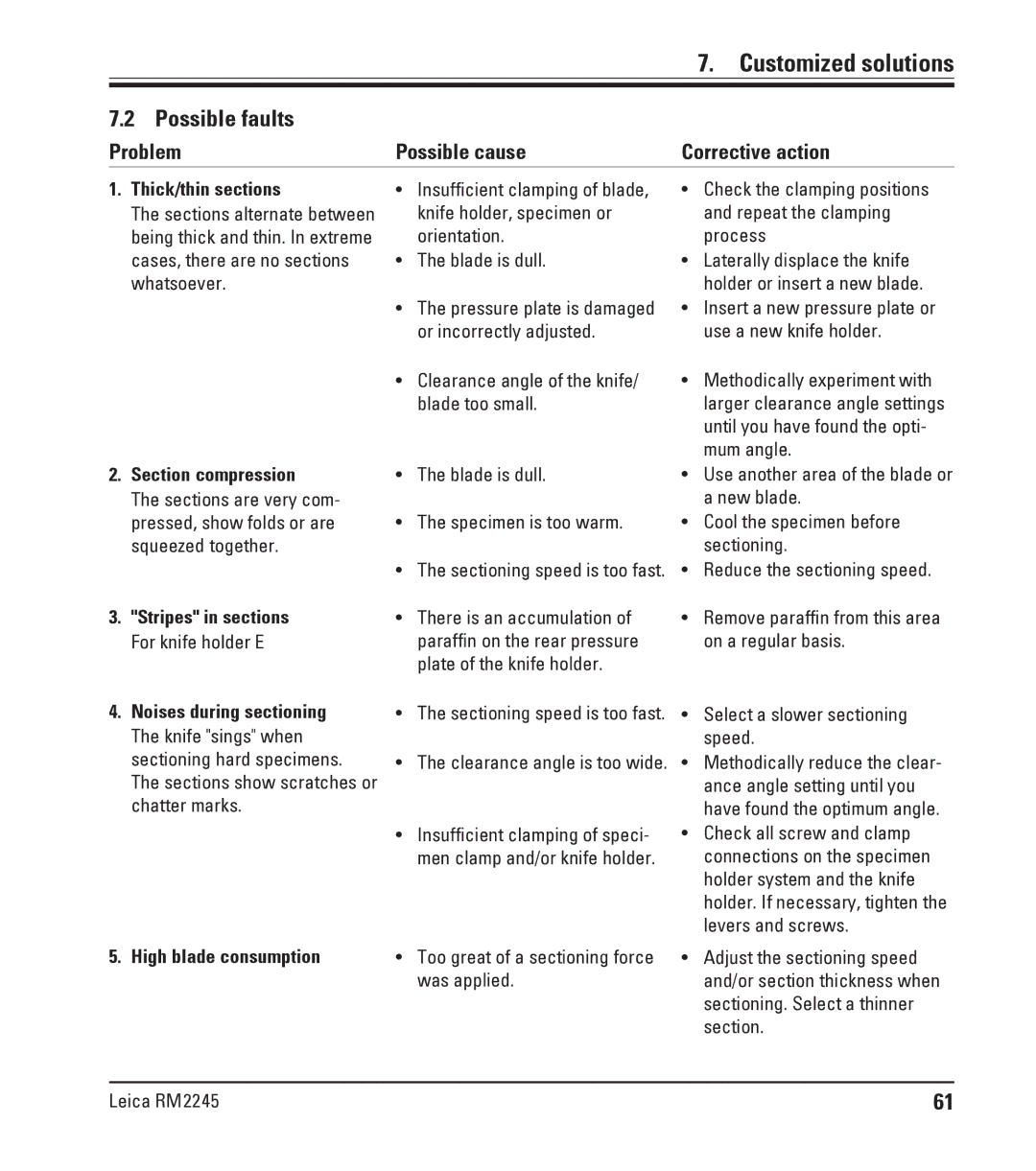
7. Customized solutions
7.2 Possible faults
Problem | Possible cause | Corrective action |
|
|
|
1.Thick/thin sections
The sections alternate between being thick and thin. In extreme cases, there are no sections whatsoever.
2.Section compression
The sections are very com- pressed, show folds or are squeezed together.
3."Stripes" in sections For knife holder E
4.Noises during sectioning The knife "sings" when sectioning hard specimens. The sections show scratches or chatter marks.
5.High blade consumption
•Insufficient clamping of blade, knife holder, specimen or orientation.
•The blade is dull.
•The pressure plate is damaged or incorrectly adjusted.
•Clearance angle of the knife/ blade too small.
•The blade is dull.
•The specimen is too warm.
•The sectioning speed is too fast.
•There is an accumulation of paraffin on the rear pressure plate of the knife holder.
•The sectioning speed is too fast.
•The clearance angle is too wide.
•Insufficient clamping of speci- men clamp and/or knife holder.
•Too great of a sectioning force was applied.
•Check the clamping positions and repeat the clamping process
•Laterally displace the knife holder or insert a new blade.
•Insert a new pressure plate or use a new knife holder.
•Methodically experiment with larger clearance angle settings until you have found the opti- mum angle.
•Use another area of the blade or a new blade.
•Cool the specimen before sectioning.
•Reduce the sectioning speed.
•Remove paraffin from this area on a regular basis.
•Select a slower sectioning speed.
•Methodically reduce the clear- ance angle setting until you have found the optimum angle.
•Check all screw and clamp connections on the specimen holder system and the knife holder. If necessary, tighten the levers and screws.
•Adjust the sectioning speed and/or section thickness when sectioning. Select a thinner section.
Leica RM2245 | 61 |
